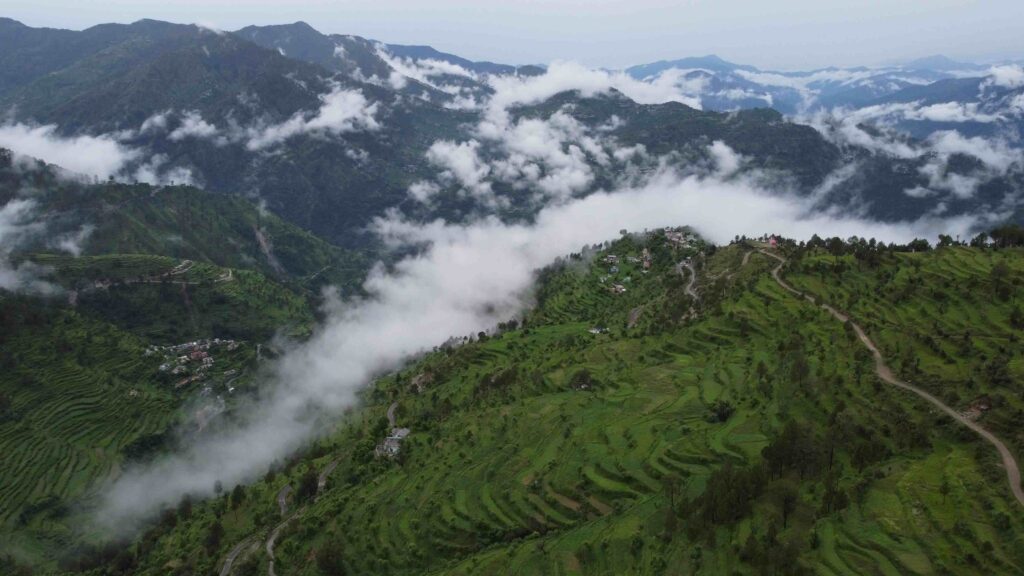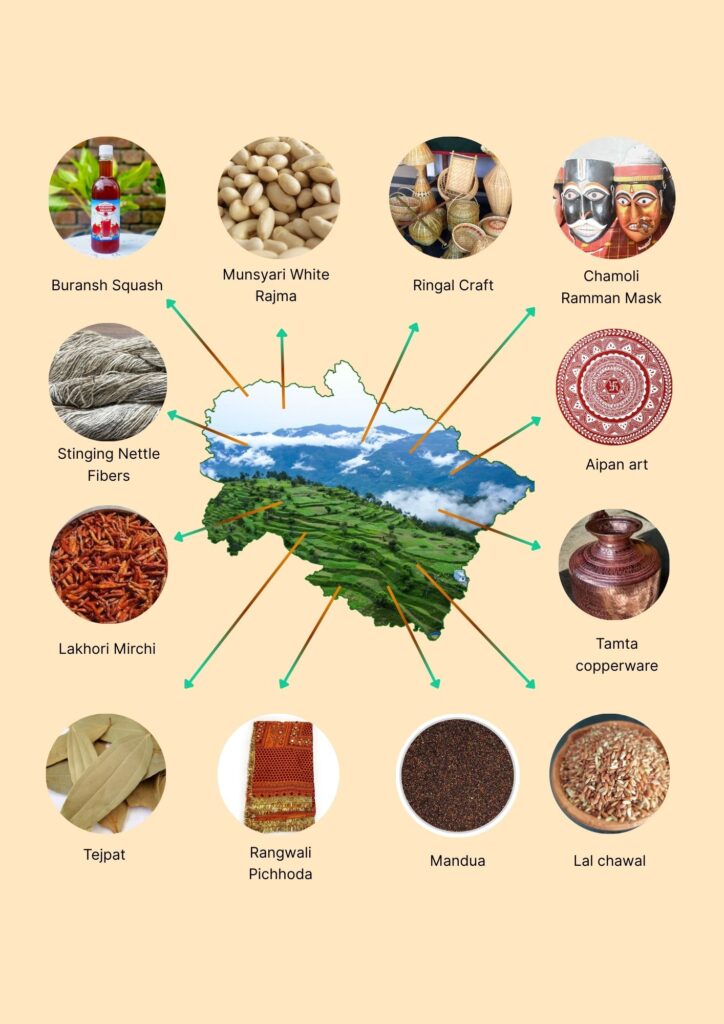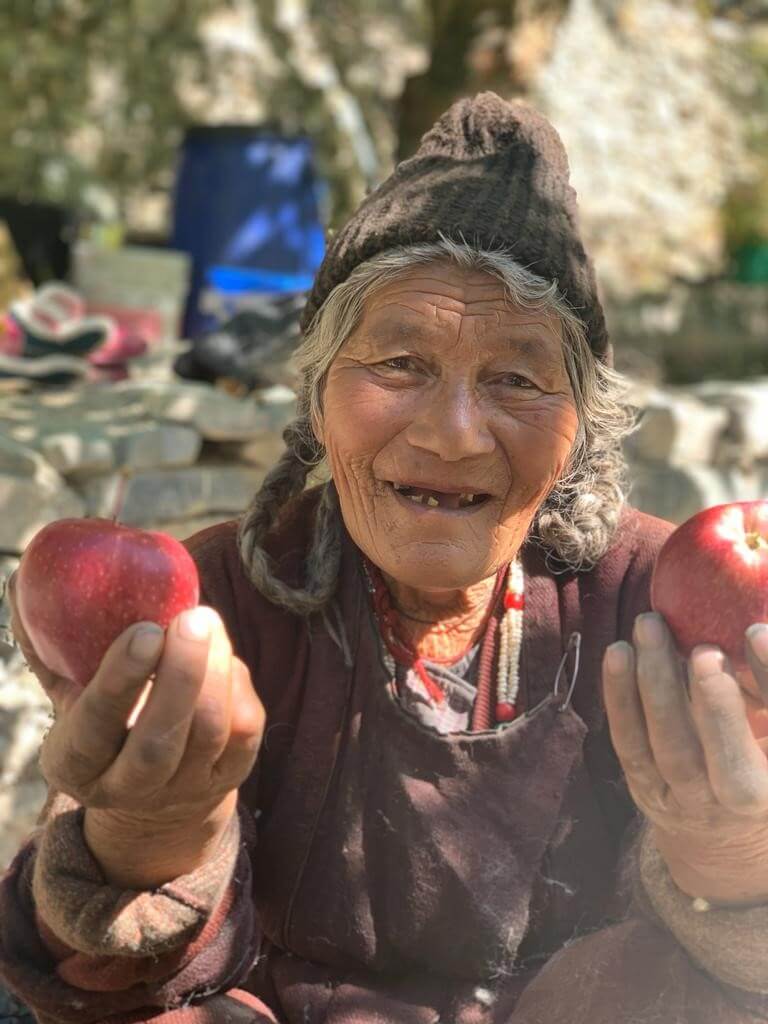Geographical Indications (GI) are collective rights that protect products whose unique characteristics, reputation or other attributes are derived from a particular geographical area. GIs not only ensure product authenticity but also contribute to the protection of traditional practices, rural livelihoods and marketability. GIs have far-reaching economic, environmental and cultural sustainability implications.
The relevance of GIs becomes particularly apparent when we consider recent events in Uttarakhand, where indigenous knowledge and local identity have been accorded unprecedented recognition. In December 2023, this Himalayan state gained nationwide attention when it received 18 Geographical Indication (GI) certificates in a single day setting a national record. But beyond these certificates lies something more meaningful: a recognition of real people, their cultural identity and the uniqueness of the environment. It shows how preserving the uniqueness of a region can transform lives.

Uttarakhand is situated at higher altitudes in the Himalayas between 187 to 7,000 meters above sea level. Life is challenging here as the air is thin and the winters are harsh. But the locals have learned to co-exist with nature in ways dating back centuries. This peculiar geographical location and centuries of adaptation have resulted in something remarkable: a treasure of local products that are now being recognized all over the world through India’s Geographical Indication certification. Uttarakhand is the only state of India that has officially recognized millets and its story describes how ancient practices can generate new opportunities.
The GI certification is much more than official recognition; it is a lifeline for mountain communities protecting ancient wisdom and generating new livelihoods. Every certificate acknowledges centuries of cultural heritage giving farmers from far-flung villages, access to high-end markets, fair prices and financial security. This story demonstrates that preserving indigenous heritage can create sustainable livelihoods. Further, it also highlights how tradition and progress can co-exist across the vast expanse of India’s geography.
Uttarakhand’s incredible GI diversity lies across several categories each highlighting distinct aspects. It has medicinal gems such as the bright red Buransh flowers that turn the mountain slopes into natural pharmacies every spring. There are ancient millets like Mandua and Jhangora; lost superfoods that nourished generations through extreme winters and are now being hailed in contemporary nutrition circles. The textile tradition of the state varies from fine Aipan ritual painting to tough cloth woven from stinging nettles that most people would not touch otherwise. And then there are the exquisite handicrafts: approximately five hundred years old copperware traditions of Almora that continue to adorn modern homes, detailed woodwork geometric patterns telling stories and UNESCO recognised Ramman Masks. The yield of agriculture comprises aromatic spices such as Indian bay leaf (tejpatta) from undisturbed forests, highland teas with unique flavour profiles and fruits like Malta oranges and Ramgarh peaches that have developed over generations to thrive in particular microclimates.

What makes these products truly special is not just their quality but the communities behind them. Every GI tag represents families who chose to preserve their ancestral knowledge despite urbanization pressure, women who learned to transform seasonal flowers into year-round businesses and artisans who adapted centuries-old techniques for modern markets while maintaining authenticity. Let us explore some of the most interesting GI tagged products of the state starting with tales that highlight how traditional wisdom generates modern opportunities.
Nature’s Pharmacy: The Crimson Treasure of Buransh
Every spring, the mountains of Uttarakhand bloom into crimson when the Rhododendron arboreum (Buransh) flowers blossom. These bright red flowers aren’t just beautiful but they also have medicinal properties. Moreover, they have been used for generations and now this traditional wisdom is backed up by science. The flowers support heart health as they are packed with antioxidants. They reduce swelling as well as joint pain, help the liver in detoxification and ease stomach troubles. They also protect skin from aging.
The Buransh squash is made from edible flowers of the Rhododendron tree. The collection of these flowers is seasonal work but it provides a good source of income to many families in the hills. Each season, families collect about 25 to 350 kilograms of flowers earning between ₹6,000 to ₹37,000. Women turn these flowers into juice, squash, chutney and jam. These items are much sought after by tourists and treasured by locals for their health benefits. Organizations such as Himalayan Environmental Studies and Conservation (HESCO) have started training programs in villages like Ramadi and Pulinda. Women learn how to process the flowers properly and market their products. For many, it’s their first taste of running their own business.
Threads of Heritage: Textile Tales of Nettle Weaving
In the mountainous regions of Chamoli, Uttarkashi and Pithoragarh, a plant few dare to touch has become an unlikely lifeline. Locally known as bichhu buti, the Himalayan nettle (Girardinia diversifolia) is well-known for the burn it inflicts if touched. But it is now becoming a reliable friend for villagers. Once considered a pest, this wild weed is now cultivated and processed into a tough environment-friendly fiber. The transformation is dramatic: it transforms from a stinging weed to a green material harder than cotton. Because it occurs naturally in the wild and does not require farming, fertilizers or irrigation, it places no additional burden on the environment. It is thus an excellent non-timber forest product.
Local families and artisans are utilizing the nettle fiber to produce clothing, ropes, mats, sacks and other domestic use goods. In the process, they are producing useful products as well as setting up a sustainable source of income in some of Uttarakhand’s most inaccessible and economically disadvantaged regions. But the uses of bichhu buti are not limited to cloth. In the past, it has been used as a valuable Himalayan medicine. It is used to cure many ailments like stomach trouble, arthritis, tuberculosis, asthma, rheumatism, diabetes and others. Its tender shoots can be used as vegetables and its roasted seeds are sometimes pickled or consumed for their nutrient content. For mountain societies, the Himalayan nettle is more than a weed. It represents perseverance. It illustrates the vigor of indigenous knowledge, the potential of sustainable livelihood and the value of deriving worth from something that nature offers.
The 500-Year Legacy of Tamta Copperware
Copperware has been an important part of our civilization. It has been used for various purposes throughout history and is still valued for its functional, aesthetic and health benefits. Copperware comes with advantages such as antimicrobial properties of the micronutrient to destroy bacteria in water, better digestion and weight loss, possible skin and hair benefits and better heart function by regulating blood pressure and cholesterol. They are also strong, long-lasting and add beauty to the kitchen.
Almora has an ancient history with copper. The town was founded by the Chand dynasty, who relocated their capital from Champawat during the 16th century AD. With their royal court, they also introduced skilled coppersmiths- the Tamtas- who hailed from Rajasthan. The artisans were commissioned to mint copper coins for the state exchequer and gradually became part of Almora’s crafts and cultural heritage. The descendants of the original Tamtas still make traditional copperware such as water pots, cooking vessels and decorative pieces. Every copper vessel is prized for its strength and the inherent coolness of copper. The craft has not only weathered centuries of transformation but has also kept pace with contemporary tastes while retaining its origins.
The GI tag given to Tamta Copperware of Almora is not merely an indicator but a celebration of heritage that is at once artistic, functional and representative. It respects not only the product itself but also the generations of craftspeople who have managed to sustain this craft. However, like most traditional crafts, the Tamta craft needs more than respect. It requires sustained effort in visibility, policy support and equitable economic opportunity to flourish in present-day markets. Safeguarding the dignity and livelihood of these craftspeople is vital for ensuring that their hard-earned knowledge continues to serve future generations.
Timeless Harvests: Ancient Grains of Uttarakhand
Uttarakhand’s mountainous terrain has nurtured distinctive varieties of agriculture that are taking on international significance. The GI-tagged millets from the state such as Mandua (finger millet), Jhangora (barnyard millet) and Chaulai (amaranth) are nutritional powerhouses that thrive in the harsh mountain climate where other crops fail to survive.
Mandua, rich in calcium and iron, contains around 344 mg of calcium per 100 g, nearly ten times the content in wheat. In addition, native genotypes like Gahat (horse gram) and Kala Bhat (black soybean) are high in protein and limiting amino acids. Lal Chawal (hill red rice) contains anthocyanins, which are natural pigments that are antioxidants and provide health benefits. It also carries a typical sweet flavour.
The aromatic Tejpat (Cinnamomum tamala) or Bay leaf, is also found in the forests of Uttarakhand and possesses antimicrobial essential oils. In addition, Chyura oil is extracted from Diploknema butyracea seeds and has both culinary and medicinal uses.
Toor Dal and Munsyari White Rajma are protein-rich legumes which are well-suited to high-altitude agriculture. Furthermore, Berinag Tea is grown at altitudes above 1,200 metres above sea level and produce leaves of unique flavour. Sweet Malta oranges, Nainital litchi and Ramgarh peach have evolved in unique microclimates and have acquired flavour profiles that best describe the environment in which they are grown. Finally, Almora Lakhori Mirchi, a red chilli pepper, provides pungency and flavour to food and is rich in capsaicin content known for its health benefits.
Living Crafts: Where Art Meets Daily Life
Apart from agricultural wonders, GI certification in Uttarakhand also encompasses stunning handicrafts that reflect centuries of creative progress. One of the GI tagged product is Aipan Art which consists of sacred geometric designs hand-painted by Kumaoni women during celebrations and rituals. These patterns, made with rice paste and red ochre paste, transform houses into sacred spaces and are rooted in mathematical concepts that researchers continue to study today.
Ringal (hill bamboo) craft transforms bamboo into lovely baskets, mats and ornaments. This eco-friendly practice generates employment throughout the year in villages and saves forest cover. The Bhotiya community’s Thulma blankets, made of yak and sheep wool, produce warm cloth that is perfect for the Himalayan winters. Bhotiya Daan rugs capture the nomadic past of Trans-Himalayan people. Their designs narrate the stories of seasonal migration and cultural interaction with Tibet. Rangwali Pichhoda is a wedding cloth traditional to Kumaon. It has intricated embroidery that takes months to complete and each pattern signifies prosperity and protection. Chamoli Ramman Mask-making is a part of UNESCO-listed folk theatre. Wood masks are made by craftsmen for sacred performances. Every mask needs special types of wood and techniques for painting which have been inherited over generations. Uttarakhand Likhai, the art of wood carving, converts native timber into ornamental panels, doors and domestic articles often adorned with floral and geometric motifs.
Saving the Heritage
Uttarakhand’s GI success story provides a model of sustainable development that respects the past while looking towards the future. Such certifications not only safeguard products but whole ecosystem of knowledge, culture and community relationships that have developed over thousands of years. The success of the state shows how centuries-old practices, if appropriately identified and enabled, can counter contemporary issues from climate resilience and biodiversity conservation to rural livelihood and cultural heritage preservation. As consumers today demand authentic and sustainable products, Uttarakhand’s GI gems are both a look back and a way ahead. Guaranteeing these products involves investing in communities that have been custodians of sustainable practices long before the concept of sustainability reached global registers. With every purchase of GI-tagged products from Uttarakhand, one ensures that these incredible traditions continue to enrich lives for generations to come.
References
Chauhan, D.S., Lal, P. & Shrama, A.K. (2021). Extraction of Rhododendron arboreum Smith flowers from the forest for the livelihood and rural income in Garhwal Himalaya, India. Sci Rep 11, 20844. https://doi.org/10.1038/s41598-021-00257-y
Rauthan, A., & Negi, A. (2024). Blooming Beauty: Exploring the Enchanting Buransh Flower and Its Remarkable Health Benefits, Including the Delicious Buransh Juice, In Uttarakhand. Just Agriculture. 4(5).
Sah, Reetesh. (2019). Tamta’s the Traditional Copper-Smiths of Central Himalayas (A Study in Historical Perspective with Special Reference to Almora, Uttarakhand). Quest-The Journal of UGC- HRDC Nainital. 13(2). 110. 10.5958/2249-0035.2019.00015.9.
Sharan Shrestha, S., Sut, S., Ferrarese, I., Barbon Di Marco, S., Zengin, G., De Franco, M., Pant, D. R., Mahomoodally, M. F., Ferri, N., Biancorosso, N., Maggi, F., Dall Acqua, S., & Rajbhandary, S. (2020). Himalayan Nettle Girardinia diversifolia as a Candidate Ingredient for Pharmaceutical and Nutraceutical Applications-Phytochemical Analysis and In Vitro Bioassays. Molecules (Basel, Switzerland), 25(7), 1563. https://doi.org/10.3390/molecules25071563
Singh, K. (2023, December 3). 18 more U’khand products get GI tag. The Times of India. https://timesofindia.indiatimes.com/city/dehradun/uttarakhand-distributes-gi-tag-certificates-for-18-more-products/articleshow/105741728.cms

